Regarding the issue of mold proliferation in homes, it is often noted that basements significantly foster the continuous and recurrent propagation of mold. The usual absence of natural sunlight, coupled with a common presence of moisture, creates a perfect setting for mold to thrive in basements. Moreover, the insufficient air flow in these spaces further encourages mold development.
Basement mold is just as dangerous to your health as mold in other parts of your home. Basement mold can make its way upstairs through vents; if spotted, you should immediately remove it. No matter where it is growing, prolonged mold exposure can injure your health.
As well as potentially harming your health, basement mold can also be a sign of a bigger issue in your home. If a serious underlying moisture issue is responsible for the mold in your basement, you will need to take immediate action to resolve it.
Is basement mold normal?
Household mold is a fairly common phenomenon. Studies indicate that, nationwide, the number of homes with mold falls anywhere between more than 50%, up to as many as 70%. Whatever the exact number, it is apparent that the majority of U.S. homes are playing host to mold.
As basements tend to be more prone to mold growth than other areas of the home, it is likely that among the many U.S. homes with mold, it would be common to find basement mold.
But while basement mold might be common, that doesn’t mean it should be considered normal. In fact, the sight of any mold growing anywhere in your home should raise a red flag.
Despite its relative prevalence in homes across the country, no level of mold growth can be considered normal. The Environmental Protection Agency (EPA) instructs homeowners who notice mold growing in their property to proceed with removing this mold immediately. No thresholds or standards exist for an ‘acceptable’ or ‘normal’ level of mold growth in the home.
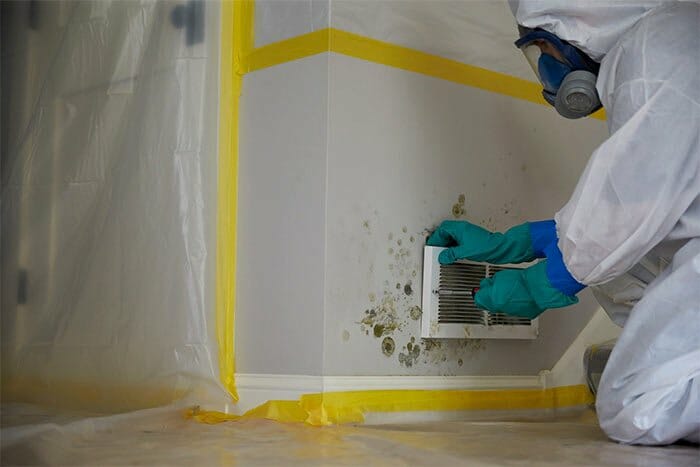
What does basement mold look like?
Technically, any type of mold can grow in your basement. Without conducting a laboratory test, it can be difficult to determine the exact type of mold that has made its home in your basement.
If you have mold in your basement, it is likely due to water damage or moisture ingress. Household molds that thrive in this environment include Chaetomium, Aspergillus, Alternaria, Cladosporium, Penicillium, and the dreaded Stachybotrys (aka toxic black mold).
These molds will present in a variety of colors and textures. Stachybotrys, although not commonly found in homes, will appear slimy, with a green-black color. Chaetomium and Cladosporium can range in color from white to brown. Alternaria tends towards an olive-green to brown color, and Penicillium is most often found in its distinctive blue-green color.
Aspergillus, which is the most commonly found mold in U.S. households, comes from a very large family, with over 185 different species. As such, Aspergillus can appear in a variety of colors and textures.
Carefully monitoring the walls, floors and ceilings of your basement is one of the best ways to nip any potential mold growths in the bud, regardless of mold type. Just as there is no ‘normal’ level of household mold, there is no ‘normal’ allowance for a certain type of mold.
In short: if you see mold, remove it!
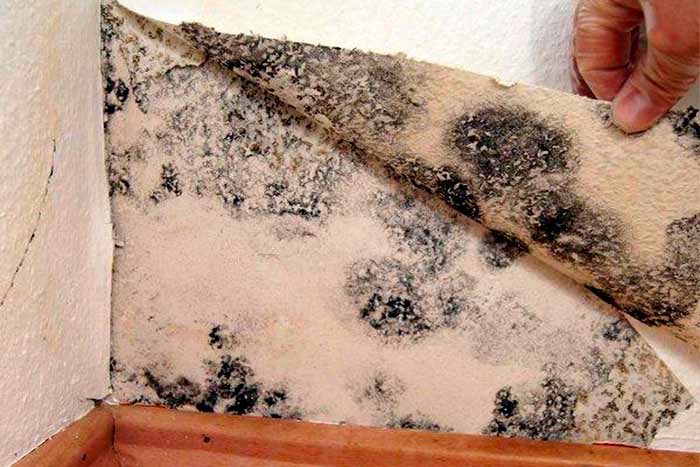
Can mold in the basement affect upstairs?
While there can be situations in which mold in your basement can spell trouble for the rest of your home, in most circumstances, basement mold will not automatically spread upstairs.
Basements provide mold with the most important environmental factors it needs to grow: a damp or moist environment, adequate nutrients, and material or surface to grow on. In most situations, it is unlikely that other areas in your home offer these same conditions.
As such, the only way basement mold can affect the upstairs area in your home is if that same upstairs area also offers a damp, moist environment for the mold to spread to and grow in.
Unfortunately, for some homeowners, this is indeed the case. If your basement mold results from a serious moisture or dampness problem, it could signify a wider moisture or dampness problem in your home. This could be the aftermath of a flood, the result of a leaky pipe, or even the consequence of cracked foundations.
In this situation, it is important to establish the cause of any moisture problem in your basement to ensure that it doesn’t present a risk to the rest of your home.
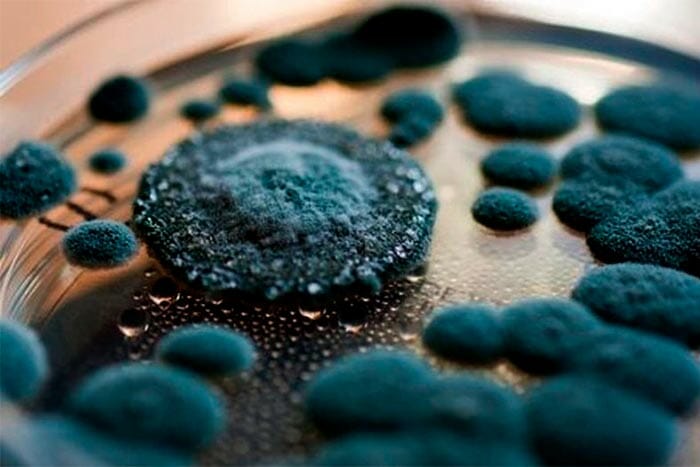
How to get rid of black mold in the basement
If you have noticed mold growing in your basement and want to get rid of it, there are a couple of options open to you. The option that you proceed with will largely depend upon the size of the mold growing in your basement.
If you have been carefully monitoring your basement for mold growths, have caught it early, and the mold growth measures less than 3 feet by 3 feet, it is possible to remove this mold yourself.
If the mold growth is larger than this, however, you will need to call in the aid of professional mold remediators.
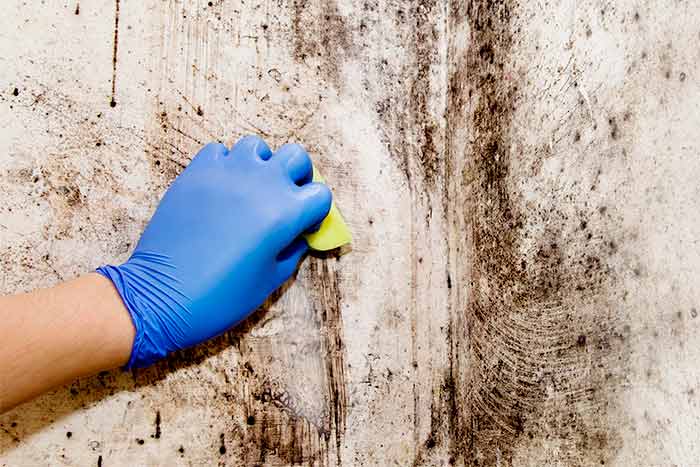
Do It Yourself removal
DIY mold removal is actually a fairly straightforward task, and can be done using common household products and materials that you already have lying around. Bleach, washing detergent, warm water, and a sponge are all you really need to remove mold from your basement.
As with any situation in which you are handling household chemicals, you will need to ensure that you are wearing the proper personal protective equipment. As you will also be dealing with mold, this protective equipment is more important than ever. At a minimum, the personal protective equipment you will need includes:
- A mask
- Protective eyewear
- Rubber gloves
- Sturdy, enclosed shoes
In many instances, basement mold tends to appear on the walls and ceilings of your basement. This often happens when the water has entered your basement as a result of flooding outside your home.
If you wish to remove basement mold from the walls or ceiling of your basement, the method listed below will work well.
- Create a solution of one part dishwashing detergent, 10 parts bleach, and 20 parts water.
- Apply the detergent/bleach solution to the moldy area with a sponge or mop. Do not over saturate the area.
- Leave the solution on the moldy area, and do not rinse away.
- Allow the solution to air dry.
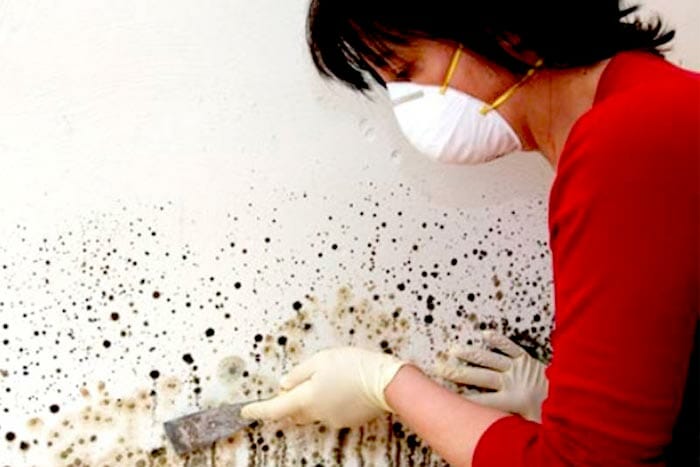
Professional Removal
Professional mold remediators will make use of specialist equipment and materials that allow them to safely tackle larger, more serious mold growths.
Mold remediators will also professionally inspect and assess your mold problem to identify its root cause. Once they have determined the source of your mold problem, usually some sort of moisture or dampness issue, they will fix this issue before attempting to remove any mold.
Professional mold remediators can also help you prevent your basement mold from growing back by providing a few key tips and tricks that keep mold at bay.
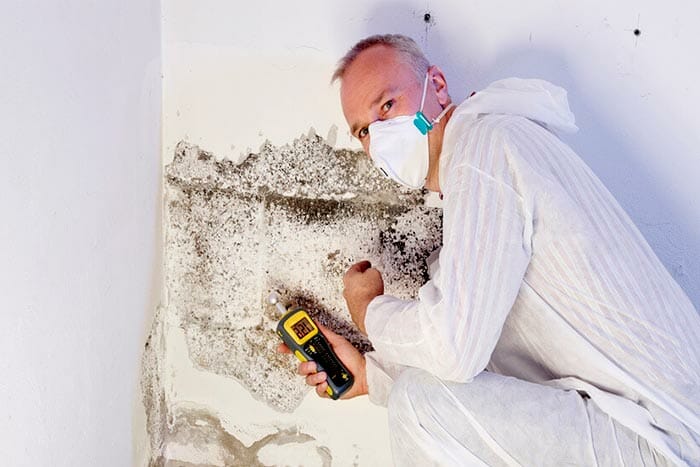
How much does it cost to remove mold from the basement?
Mold removal costs will differ widely and will depend on the extent and location of the mold growths. On average, the cost for mold removal in your basement ranges from $500-$6,000.
If the full extent of your mold removal simply involves your professional mold remediator removing mold from drywall or concrete, then your remediation bill will likely fall at the lower end of this spectrum. This of course assumes that there is no significant, underlying moisture or dampness issue in your basement.
However, the cost of your remediation will rise steadily if your basement mold is growing in very large patches, or if it has grown as the result of an unsealed foundation.
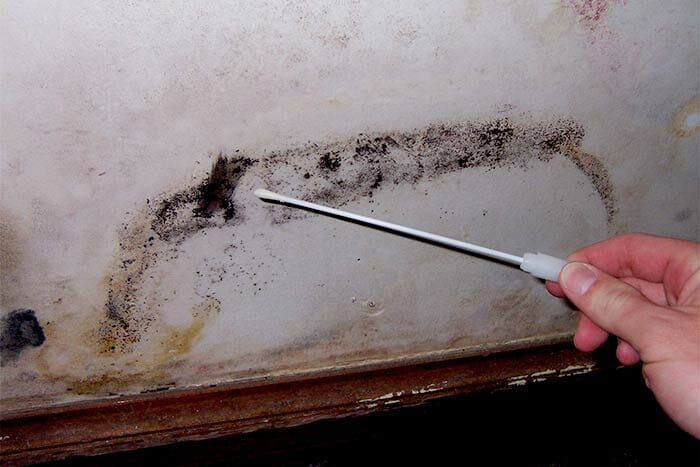
Can basement mold make you sick?
Any type of mold, growing anywhere in your home, has the potential to make you sick. This is particularly the case for susceptible persons, such as children, the elderly, those with mold allergies, and asthma sufferers.
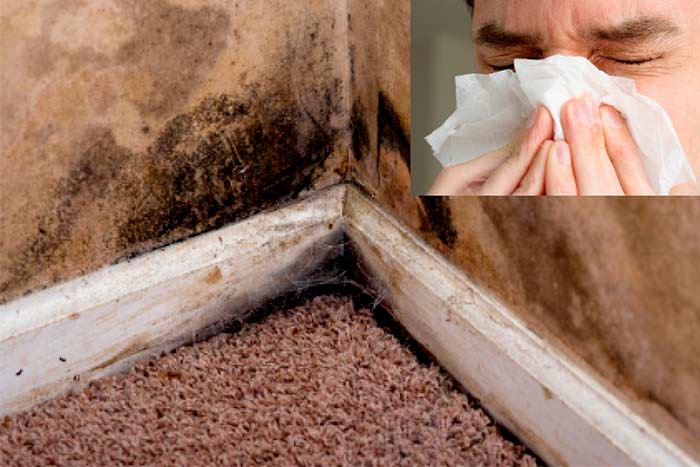
How long does it take to get sick from basement mold?
Everyone reacts differently to mold, and what may be severely debilitating for some people could present no problem for others.
In many circumstances, those with a low tolerance to mold will experience symptoms almost as soon as they are exposed to the mold. This is because the tiny, lightweight spores that accompany mold growths and mold colonies are easily inhaled.
If you do not frequently make use of your basement, it may take a while for symptoms to set in. Any amount of prolonged exposure to mold increases the risks of more serious health problems however, so do not wait for symptoms to start occurring before you remove basement mold!
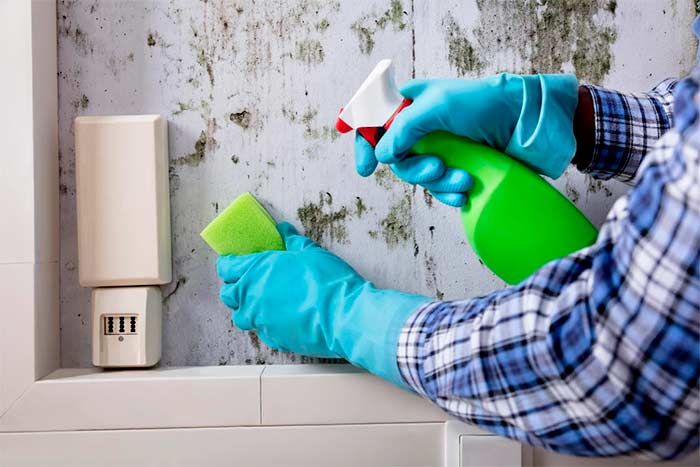
What are the symptoms of mold sickness?
The way in which you react to mold will depend on your sensitivity levels. Some more common symptoms of mold exposure and sickness include:
- Respiratory symptoms: A blocked or stuffy nose, sneezing, coughing, and even shortness of breath.
- Eye and skin complaints: Red, itchy eyes and rash-like symptoms.
- Asthma: Asthmatic complaints and asthma attacks.







